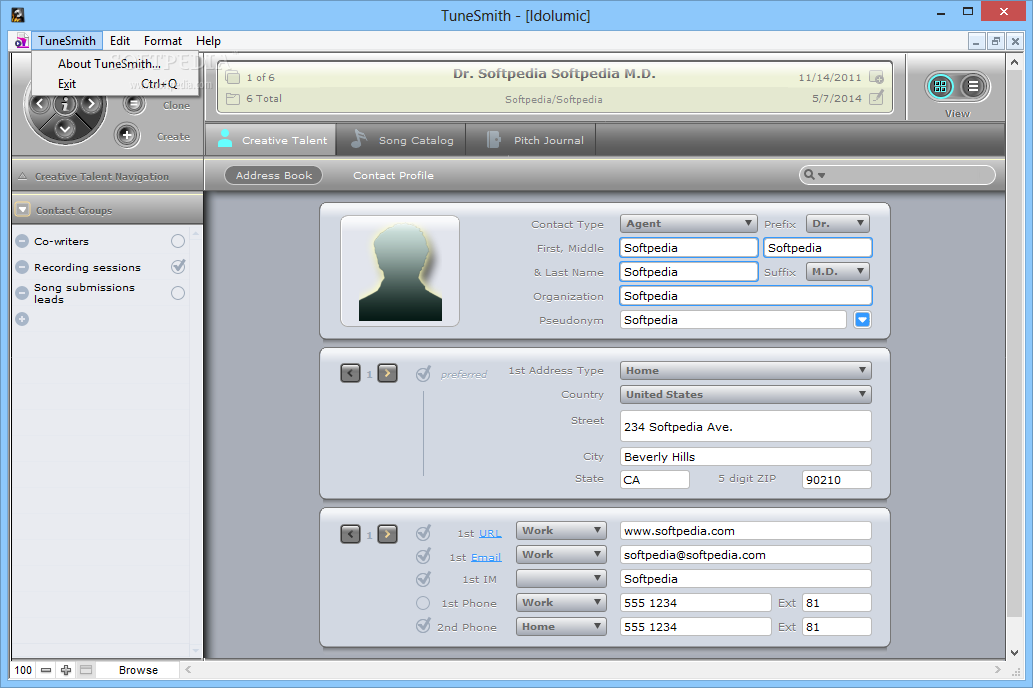


- #TUNESMITH V3 HOW TO#
- #TUNESMITH V3 DRIVERS#
- #TUNESMITH V3 DRIVER#
- #TUNESMITH V3 MANUAL#
- #TUNESMITH V3 ANDROID#
WARNING: Before using the bias tee please ensure that you understand that you should not use this option when the dongle is connected directly to a DC short circuited antenna unless you are using an LNA. The bias tee can continuously pull up to 180 mA of current. introduces a 4.5V bias tee that can be toggled entirely in software. of our dongles included a bias tee which could manually be enabled by opening the case and soldering two pads on the PCB together. To disable forced direct sampling do the opposite command "rtl_eeprom -q n" Feature 2: Software Selectable Bias Tee
#TUNESMITH V3 DRIVER#
To force it on, use our RTL-SDR-Blog driver branch, and use set the direct sampling always on flag in the EEPROM with the command "rtl_eeprom -q y". For example, not all programs expose the direct sampling controls to the user, so in those programs it can be impossible to turn direct sampling mode on. In some cases you may want to force direct sampling to be always on.
#TUNESMITH V3 DRIVERS#
Please see our RTL-SDR-Blog Drivers for a version that includes a -D direct sampling flag. The standard Osmocom version of rtl_tcp only allows for direct sampling on the I-branch, which is useless as we need direct sampling on the Q-branch. (Note that that 28.8 MHz is downsampled on chip resulting in the 3.2 MHz bandwidth) To remove these images you need to use a low pass filter for 0 - 14.4 MHz, and a high pass filter for 14.4 - 28.8 MHz, or simply filter your band of interest. The RTL-SDR ADC samples at 28.8 MHz, thus you may see mirrors of strong signals from 0 - 14.4 MHz while tuning to 14.4 - 28.8 MHz and the other way around as well. Note that this feature makes use of direct sampling and so aliasing will occur. To go back to listening to frequencies above 28.8 MHz remember to change the sampling mode back to "Quadrature Sampling".
#TUNESMITH V3 ANDROID#
SDR-Touch on Android has a direct sampling option available in its settings page. Make sure that there is no space after the comma. For SDR-Console please see this linked post for a modified ExtIO that can enable direct sampling. In some installs that use different drivers it may be "rtl=0,direct_samp=3" instead. In GQRX the device string would be "rtl=0,direct_samp=2" (without the quotes). Other software like HDSDR and GQRX can also support direct sampling. It may entail setting a device string, and for the Q-branch, the value should be 2 (or sometimes 3). Even more ideally you'd use an antenna tuner, though this is expensive.

Ideally you should use a 9:1 unun with the long wire antenna for optimal reception. To check which element is connected to the center coax you can open the lid on the black dipole base. If you have one of our dipole antennas, try connecting a long 5 meter or longer wire to the element connected to the coax center wire. VHF antennas like small discones or short whip antennas will probably not pick up HF signals very well, if at all.
#TUNESMITH V3 HOW TO#
In this guide we explain how to use those feature. Version 3 of our customized RTL-SDR dongles brought out some new interesting features. Please purchase either directly from our store, or using the links on the store to official marketplace listings or resellers. If you were tricked into thinking it was an original RTL-SDR Blog V3, please lodge a dispute with the marketplace platform purchased from. If you have purchased a counterfeit RTL-SDR Blog V3 device the features described in this guide may not work correctly, if at all.
#TUNESMITH V3 MANUAL#
Manual gain controls and decimation driver.Measuring Traffic Volumes with Passive Radar.SignalsEverywhere Direction Finding Tutorial.Measuring Filter Characteristics & VSWR.Performing Replay Attacks with RTL-SDR and RpiTX.QRP (FT8, JT9, WSPR etc) Monitoring Station.Decoding 433 MHz ISM Band Weather Stations.GOES 16/17 and GK-2A Weather Satellite Tutorial.


 0 kommentar(er)
0 kommentar(er)
